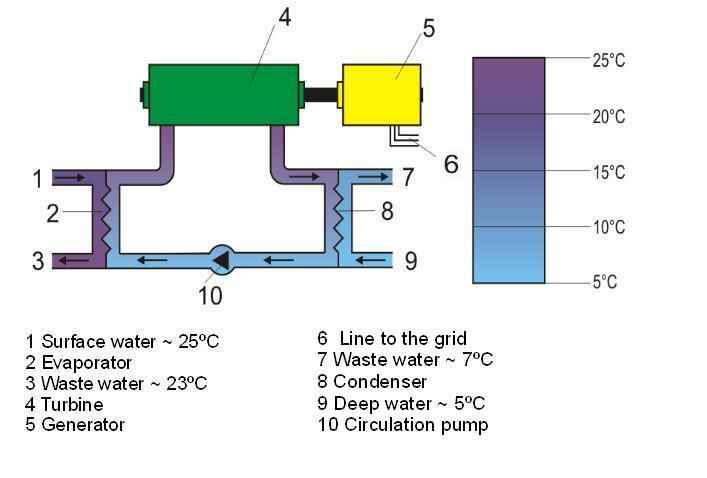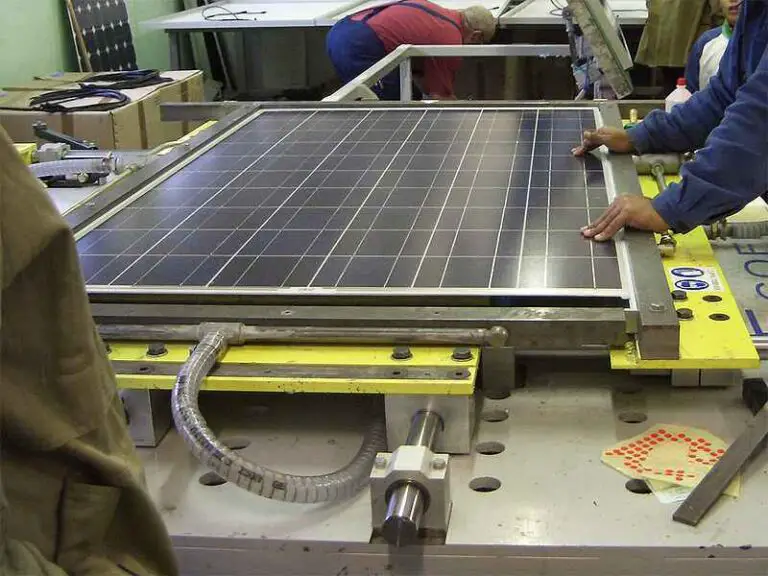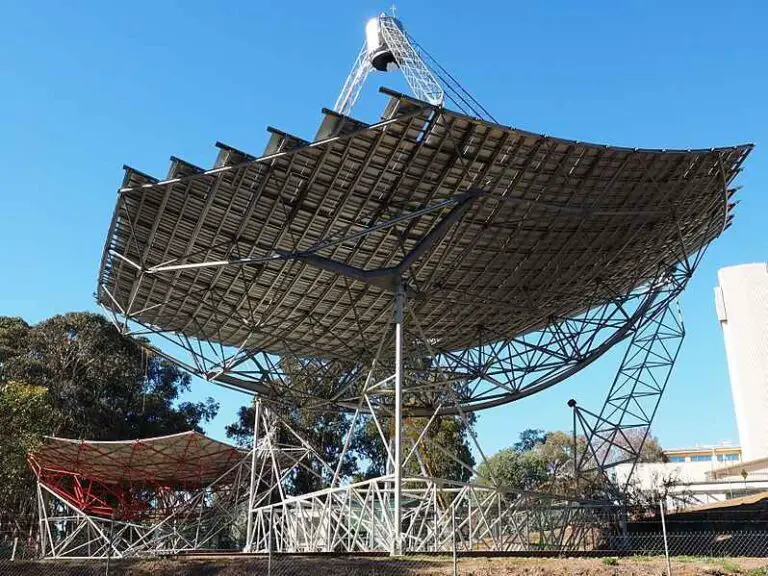OTEC System Definition, Types, Components, Advantages, Disadvantages
OTEC system is a technological system that captures and converts heat from surface ocean waters, into mechanical energy and electricity.
This article discusses OTEC system definition, types, components, advantages and disadvantages, as outlined below;
-Advantages and Disadvantages of OTEC Systems
OTEC System Definition
An OTEC system is an assemblage of technological components, equipment, methods and practices, that work together to actively extract and convert thermal energy from the ocean, in order to generate electricity. This is evident in the full form of the abbreviation OTEC; which is Ocean Thermal Energy Conversion.
OTEC systems include the OTEC plant (or OTEC power plant) alongside all other tools and techniques required to make the conversion process of ocean thermal energy, efficient.
In comparison to other electricity generation and renewable energy technologies, the OTEC system is a recent innovative concept, and is still in its stage of technological and theoretical development.
Types of OTEC Systems
There are three types of OTEC systems, which are; open cycle, closed cycle, and hybrid cycle systems. Each of them is discussed briefly below;
1). Open Cycle System (as one of the Types of OTEC Systems)
Ocean Thermal Energy Conversion (OTEC) open cycle system is one which does not rely on a low-boiling point working fluid like ammonia, to spin the turbine.
On the contrary, OTEC open cycle system utilizes warm surface water from the ocean to produce vapor for spinning the turbine [1].
To vaporize seawater, the open cycle OTEC system makes use of a low-pressure vaporizer chamber, which enables the water to convert to gaseous state at temperatures below the actual boiling point of water.
The vapor may then subsequently expand, and exert impulsive pressure on the turbine blades to make them spin.
Advantages of open cycle OTEC include simplified hydraulic system, and no risk of marine pollution by the working fluid.
2). Closed Cycle OTEC System
Closed cycle OTEC system is a type of OTEC system which encloses a low-boiling point working fluid like ammonia, that is vaporized at low temperature of surface seawater, and used to exert vapor-pressure on the rotor blades of the turbine [4].
The advantage of closed cycle OTEC is its energy efficiency and water conservation capability, compared to open cycle system.
Open cycle is different from closed cycle OTEC system in design, operational detail, efficiency, and environmental impact. The main difference between open cycle and closed cycle OTEC systems is the presence of the working fluid in closed cycle system, which increased its complexity and environmental impact, which boosting its efficiency.
Below is a table that summarizes open cycle vs closed cycle OTEC comparison;
Comparison Criteria | Open Cycle OTEC | Closed Cycle OTEC |
Working Fluid | Absent | Present |
Relative Complexity | Low | High |
Environmental Impact (Relative) | Low | High |
Relative Efficiency | Moderate | High |

3). Hybrid Cycle OTEC System (as one of the Types of OTEC Systems)
Hybrid ocean thermal energy conversion is simply a combination of open and closed cycle OTEC mechanisms [2].
In a hybrid OTEC system, both the low-boiling point working fluid, and seawater, are circulated and actively utilized. The seawater is converted to vapor in a low-pressure vacuum chamber, as in open-cycle systems, and the resulting steam is used to vaporize the low-boiling point working fluid like ammonia, as is done in closed-cycle systems [3].
While the set-up and operational mechanism of hybrid OTEC is more complex than those of closed-cycle and open-cycle systems, the hybrid system is generally more efficient than other types.
Components of OTEC Systems
Components of OTEC systems are; ocean thermal energy, working fluid, energy conversion process, method(s), and power plant equipment, which include turbine, pumps, heat exchanger and electric generator.
Advantages and Disadvantages of OTEC Systems
Advantages of OTEC systems are:
1). Renewable energy source
2). No greenhouse emissions or air pollution
3). Relatively-consistent energy availability
4). Relatively low technological complexity
5). Low overall environmental impact
Disadvantages of OTEC systems are;
1). Large volumes of water required
2). Thermal energy is much less than that from other energy resources/technologies
3). Working fluid may pollute marine ecosystem
4). Technology is geographically limited to marine and coastal regions
5). Early stage of development affects cost, reliability and acceptability
Conclusion
OTEC system refers to all methods, processes and technological equipment that contribute to the effective conversion of ocean thermal energy, to mechanical energy and electricity.
Types of OTEC systems are;
1. Open Cycle System
2. Closed Cycle OTEC System
3. Hybrid Cycle OTEC System
Components of OTEC systems are;
1. Ocean thermal energy
2. Working fluid
3. Energy conversion process and method(s)
4. Power plant equipment, including
4a. Turbine
4b. Pumps
4c. Heat exchanger
4d. Electric generator
The main advantages and disadvantages of OTEC system are; renewable source, no emissions or air pollution, consistent energy supply, low complexity, low environmental impact (advantages); large water volume, low thermal energy density, marine pollution risk, geographic limitation and developmental issues (disadvantages).
References
1). Hernández-Romero, I. M.; Zavala, V.; Flores, A.; Nápoles-Rivera, F.; Fuentes-Cortes, L. F.; Esquivel-Patiño, G. G. (2022). "Multi-objective optimization of an open-cycle, ocean thermal energy conversion system with desalinization." Chemical Engineering and Processing 179(8):109091. Available at: https://doi.org/10.1016/j.cep.2022.109091. (Accessed 12 March 2023).
2). Panchal, C. B.; Bell, K. J. (May 1, 1987). "Simultaneous Production of Desalinated Water and Power Using a Hybrid-Cycle OTEC Plant." ASME. J. Sol. Energy Eng. May 1987; 109(2): 156–160. Available at: https://doi.org/10.1115/1.3268193. (Accessed 12 March 2023).
3). Suparta, W. (2020). "Marine Heat as a Renewable Energy Source." WIDYAKALA JOURNAL OF PEMBANGUNAN JAYA UNIVERSITY 7(1):37. Available at: https://doi.org/10.36262/widyakala.v7i1.278. (Accessed 12 March 2023).
4). Terenius, P. (2015). "OTEC Matters 2015." University of Borås. Available at: https://www.researchgate.net/publication/328741842_OTEC_Matters_2015. (Accessed 12 March 2023).


